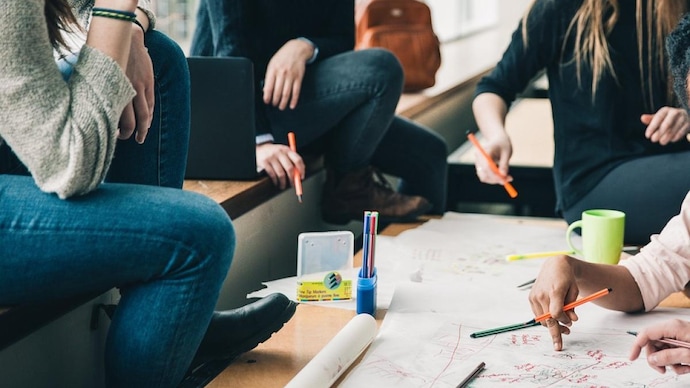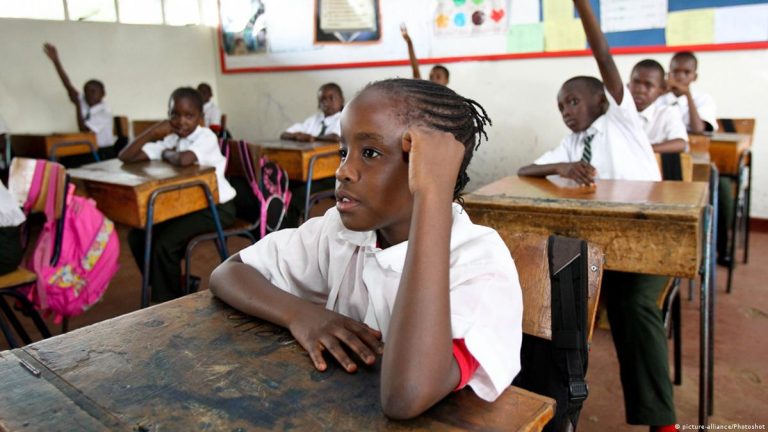Family Health 1 | J S 1 Basic Science | First Term Scheme Of Work | Home Economics
Family Health 1 | J S 1 Basic Science | First Term Scheme
Lesson Plan: Family Health (I) | WEEK 5
Subtopics:
- Personal Cleanliness / Personal Hygiene
- Environmental Cleanliness (Sanitation) and Methods Used for Maintaining Cleanliness
- Effect of Poor Hygiene and Sanitation
LEARNING OBJECTIVES:
By the end of the lesson, students should be able to:
- Relate nutrition and food nutrients to the prevention of diseases.
- Classify food items based on food nutrients and state their functions.
- Plan a three (3) day adequate/balanced diet to maintain good health.
KEY VOCABULARY WORDS: Hygiene, Sanitation, Pathogens, Nutrients, Balanced diet, Cleanliness, Contamination
RESOURCE AND MATERIALS: Chalkboard/Whiteboard, Charts showing types of nutrients and healthy foods, Pictures of clean and dirty environments
- Handwashing materials (soap, water)
BUILDING BACKGROUND:
- Ask students: “Why do we wash our hands before eating?”
- Discuss what might happen if we ignore cleanliness.
- Highlight common diseases caused by poor hygiene (malaria, diarrhea, typhoid, cholera).
- Connect hygiene and sanitation to healthy living.
CONTENT
1st Period
- Personal Cleanliness / Personal Hygiene
- Definition: Personal hygiene is the practice of keeping your body clean to prevent illness and promote health.
- Examples of personal hygiene practices:
- Bathing daily
- Washing hands with soap before eating and after using the toilet
- Brushing teeth twice daily
- Wearing clean clothes
- Cutting nails and hair regularly
- Keeping hair and body free from lice and germs
- Environmental Cleanliness (Sanitation) and Methods Used
- Definition: Sanitation is the maintenance of clean conditions in the environment to prevent disease.
- Methods of maintaining environmental cleanliness:
- Proper disposal of household waste (garbage bins, composting)
- Keeping the compound and surroundings clean
- Clearing drainage and preventing stagnant water
- Avoiding open defecation; using toilets or latrines
- Regular washing of utensils, plates, and cooking areas
- Spraying insecticides to control mosquitoes
2ND PERIOD
- Effect of Poor Hygiene and Sanitation
- Health effects include:
- Spread of diseases such as cholera, diarrhea, typhoid, malaria
- Skin infections, lice, and scabies
- Respiratory infections from unclean air or dust
- Stomach upset or food poisoning due to dirty utensils
- Social effects include:
- Bad body odor
- Low self-esteem
- Absenteeism from school or work
WRAP UP & ASSESSMENT:
- Recap main points: importance of personal and environmental cleanliness, and effects of poor hygiene.
- Questions:
- Define personal hygiene.
- List three methods of maintaining environmental cleanliness.
- State two effects of poor sanitation on health.
- Class Activity: Students make a short plan for maintaining cleanliness at home.
ASSIGNMENT:
- Prepare a 3-day balanced diet chart for yourself or your family, including breakfast, lunch, and dinner.
- Observe and write down three hygiene practices at home you did today.
HOD/VP’S COMMENT & ENDORSEMENT:
________________________
Date/Signature
For Further Study
Introduction of Personal Cleanliness Cleanliness is the practice of maintaining the environment and oneself in an orderly and neat condition. It involves more than just removing dirt by washing. It also includes everything we can do to protect and care for our bodies. Personal cleanliness can be defined as keeping our bodies and clothes clean. There are advantages to being clean. For instance, the skin on our bodies is very sensitive to dirt and germs. Dirt and germs can make a person feel itchy and uncomfortable. They also make a person ill. Taking a bath or washing the body with a cloth helps prevent skin trouble as well as body odor. Brushing our teeth and cleaning our fingernails makes us look good, too. Dirty teeth are not only ugly-looking but can also decay easily.
- Definition of Personal Cleanliness: Explain that personal cleanliness (hygiene) involves keeping the body clean to prevent diseases and promote health. Discuss basic personal hygiene practices like bathing, brushing teeth, wearing clean clothes, and hand washing.
- Definition of Environmental Cleanliness (Sanitation): Explain that environmental cleanliness refers to maintaining clean surroundings (both indoors and outdoors) to prevent disease spread, such as waste disposal, cleaning the house, and keeping the environment free from pollution.
Importance of Personal and Environmental Cleanliness (15 minutes):
- Personal Cleanliness:
- Prevents body odor.
- Reduces the risk of infections like skin diseases and dental problems.
- Enhances self-esteem and social interaction.
- Environmental Cleanliness:
- Prevents the spread of diseases such as cholera, malaria, and typhoid.
- Promotes a healthy and pleasant living environment.
- Prevents pollution of air, water, and soil, keeping the community healthy.
Ways to Maintain Personal and Environmental Cleanliness (15 minutes):
- Personal Cleanliness:
- Regular bathing and washing of hands after using the toilet.
- Proper dental hygiene (brushing twice a day).
- Wearing clean clothes and maintaining clean hair and nails.
- Environmental Cleanliness:
- Proper disposal of waste (solid and liquid) in designated areas.
- Cleaning toilets and kitchens regularly.
- Avoiding littering and participating in community sanitation programs.
- Regular cleaning of surroundings, including drainage systems to prevent water stagnation.
Family Health 1 | J S 1 Basic Science | First Term Scheme
Group Discussion:
- In groups, students brainstorm and propose additional ways to maintain both personal and environmental cleanliness.
Effects of Poor Hygiene and Sanitation on Society (15 minutes):
- Health Effects:
- Outbreaks of diseases like cholera, dysentery, and malaria.
- Increased hospital visits and medical expenses.
- Environmental Effects:
- Pollution leads to unclean air, contaminated water, and unhealthy soil.
- Blocked drainage systems leading to flooding.
- Social Effects:
- Poor personal hygiene can lead to social isolation and low self-esteem.
- Communities with poor sanitation face declining tourism and economic activities due to an unhealthy environment.
Class Discussion:
- Engage the students by asking them how poor hygiene has affected their communities or if they know anyone who has suffered from hygiene-related diseases.
5. Conclusion (5 minutes):
- Recap the key points discussed on the importance of cleanliness, ways to maintain it, and the consequences of neglecting hygiene and sanitation.
- Encourage students to practice good hygiene at home and in school, and to actively participate in maintaining environmental cleanliness.
Assessment:
- Classwork:
Students will write short answers on:- The importance of personal hygiene in their lives.
- Three ways to maintain environmental cleanliness in their community.
- Homework:
Ask students to observe their surroundings at home and report the cleanliness status. They should suggest improvements for maintaining a clean environment.
Web Advert Links
You Can Get the Complete Lesson Note Download On Your Phone Now By clicking the Link Below For Each Class:






